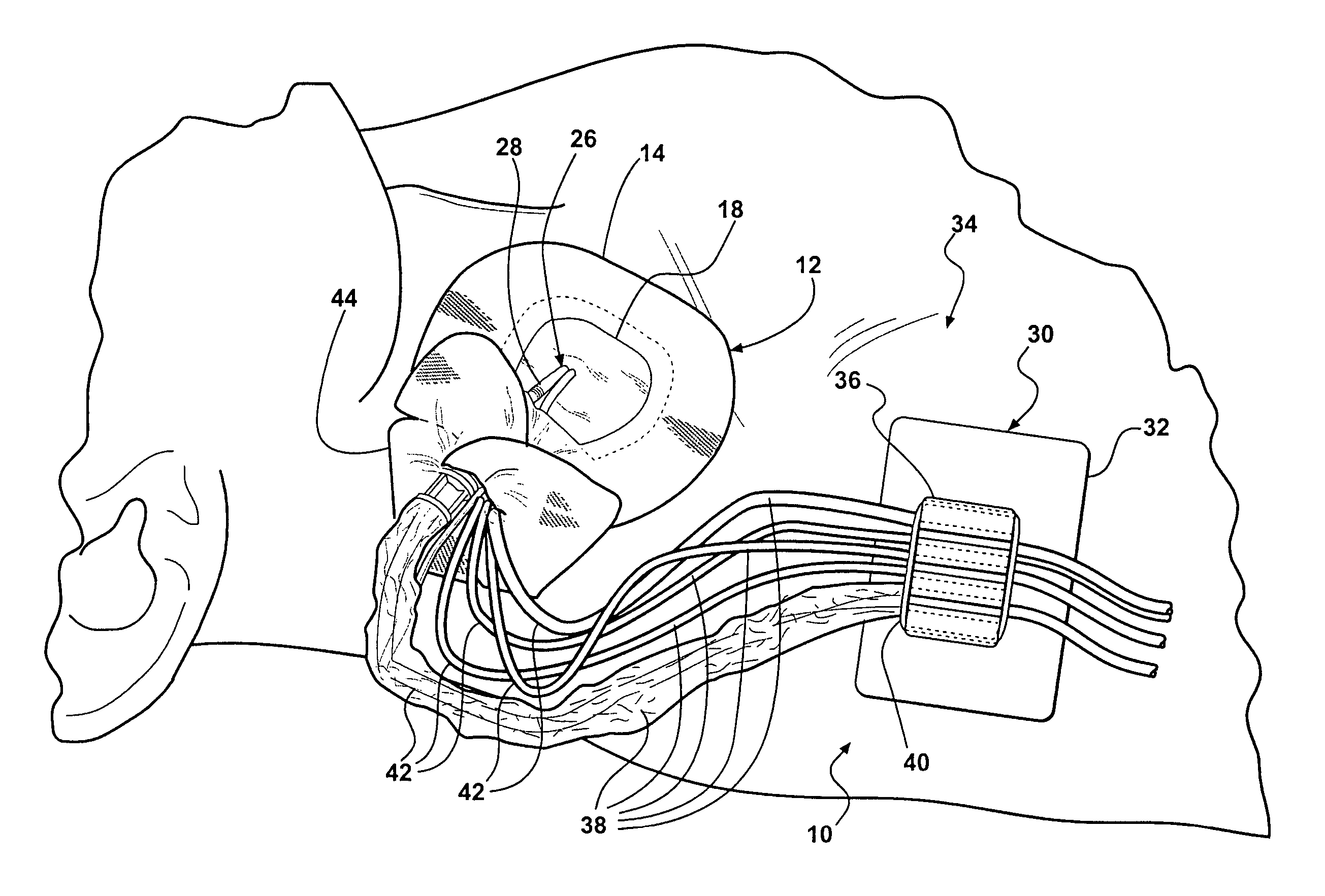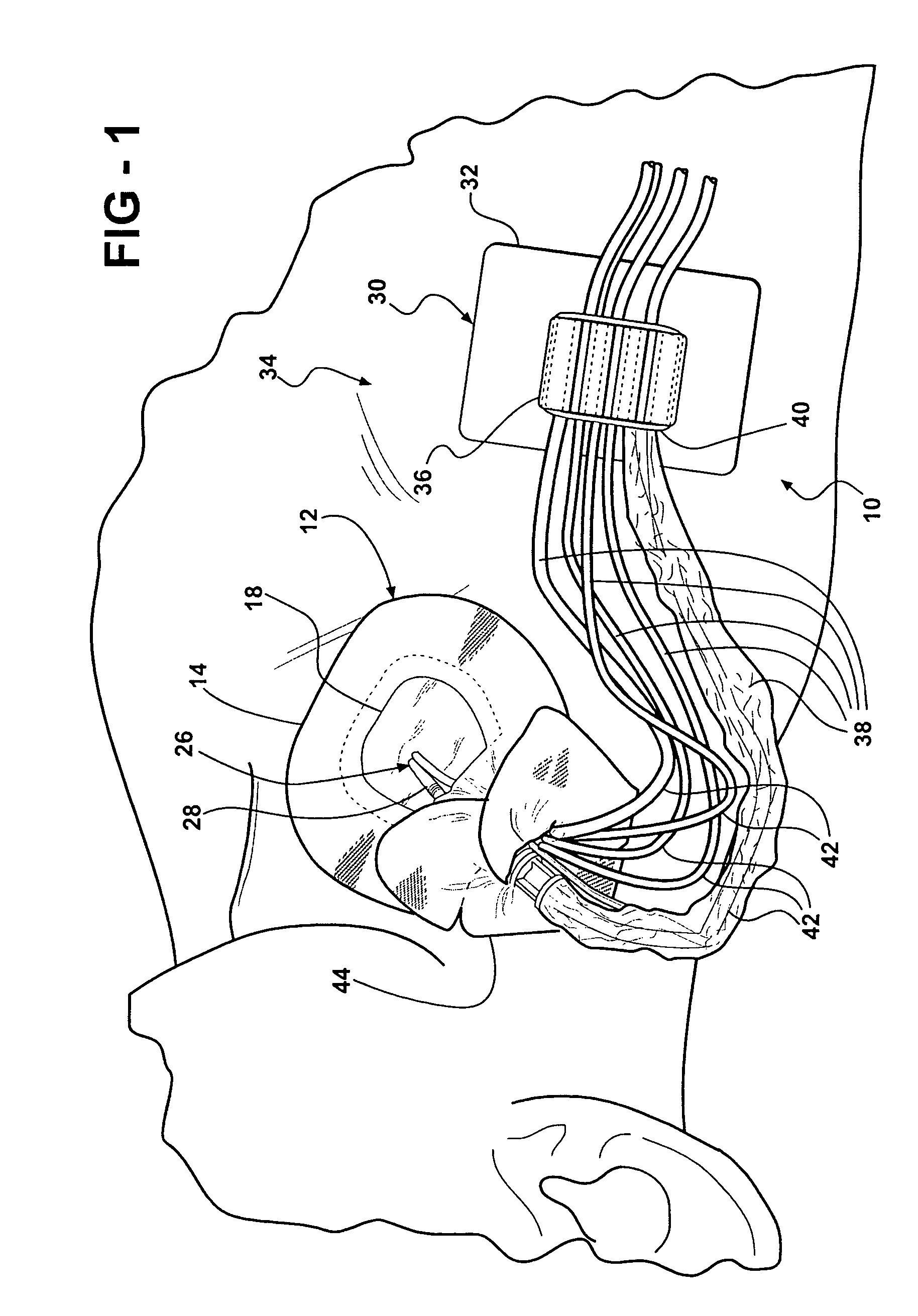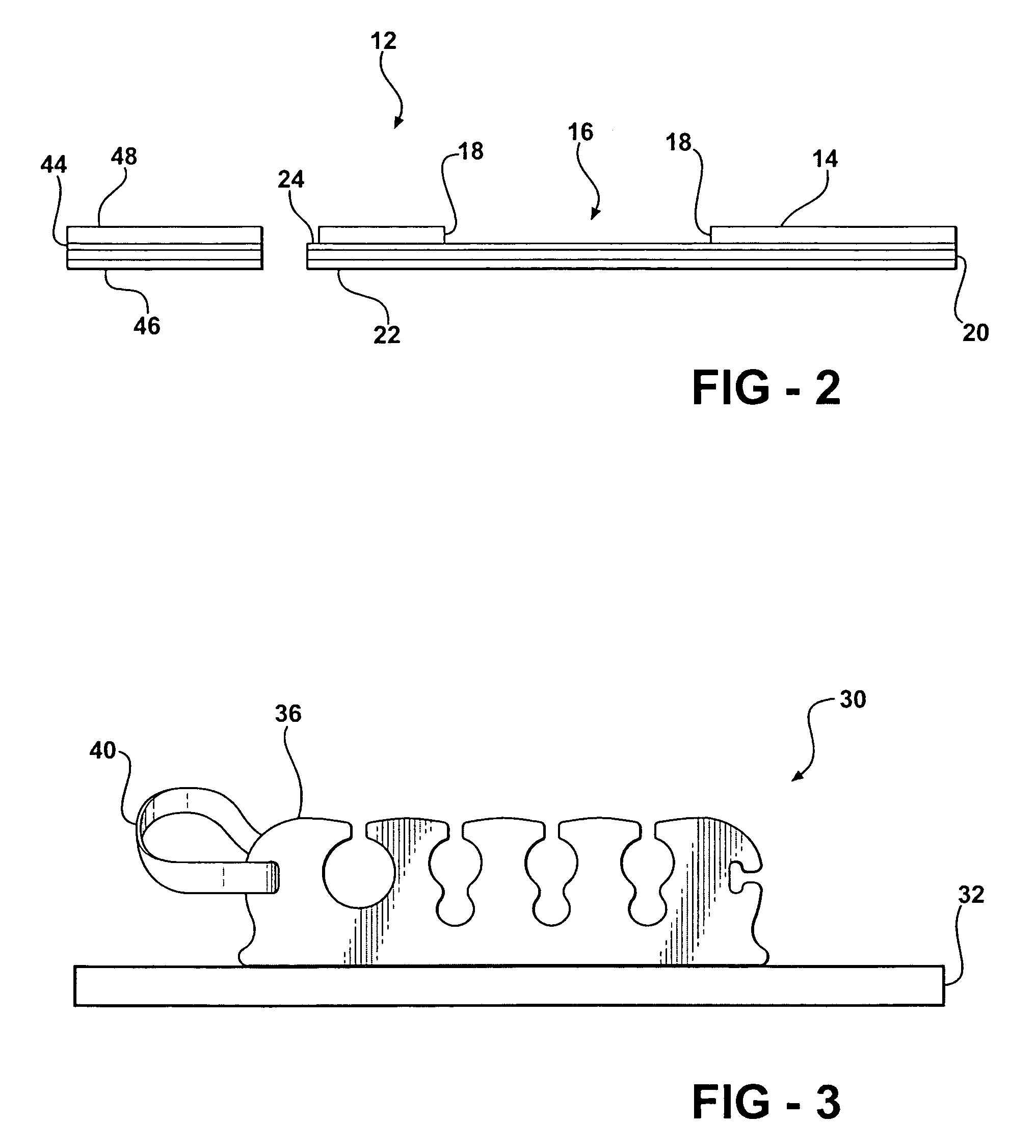Jugular and subclavian access site dressing, anchoring system and method
a technology for access sites and skin, applied in the field of skin dressings and medical tubing anchors, can solve the problems of ineffective dressing, separation of dressing from patient's skin, and exposure of access sites to harmful bacteria and other pathogens
- Summary
- Abstract
- Description
- Claims
- Application Information
AI Technical Summary
Benefits of technology
Problems solved by technology
Method used
Image
Examples
Embodiment Construction
[0022]Referring now to the drawings in detail, numeral 10 generally indicates a system adapted to tend a jugular or subclavian catheter and connecting tubing that prevents inadvertent release of catheter(s) and dressing from a patient's body. The system can accommodate various sizes and combinations of connecting / medical tubing utilized at a jugular or subclavian access site, such as an introducer sheath with a side arm, an introducer sheath with a side arm in combination with a pulmonary artery catheter, and either a single, double, or triple lumen central venous catheter. Moreover, the system can be utilized on either a right-hand side or a left-hand side access site and the system eliminates the forces that cause the dressing to tear away from the skin around the access site.
[0023]As shown in FIGS. 1 through 3, a preferred system adapted to tend a jugular or subclavian catheter and connecting tubing 10 includes a window dressing 12 of the type including a layer member 14 having a...
PUM
 Login to View More
Login to View More Abstract
Description
Claims
Application Information
 Login to View More
Login to View More - R&D
- Intellectual Property
- Life Sciences
- Materials
- Tech Scout
- Unparalleled Data Quality
- Higher Quality Content
- 60% Fewer Hallucinations
Browse by: Latest US Patents, China's latest patents, Technical Efficacy Thesaurus, Application Domain, Technology Topic, Popular Technical Reports.
© 2025 PatSnap. All rights reserved.Legal|Privacy policy|Modern Slavery Act Transparency Statement|Sitemap|About US| Contact US: help@patsnap.com



